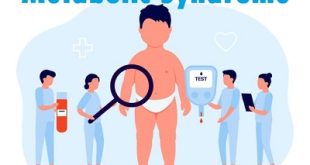Definition
Myopia, otherwise known as short-sightedness, is a common eye condition that causes objects in the distance to appear blurred while close objects are often seen clearly. It occurs when the eye has too much focusing power, either due to the eye being too long or the cornea being more curved than usual making the eye too strong. As a result, when someone with short-sightedness tries to look at distant objects, the rays of light are focused in front of the retina, rather than directly onto it, causing the appearance of those objects to become blurred.
Types of Myopia
It is broadly classified into Two Types:
- Clinical Classifications
- Etiological Classifications
Based on the clinical classifications it can be sub-classified into following:
- Congenital Myopia is a type of myopia which is present since birth, though usually diagnosed in 2-3 years of age.
- Simple or Development myopia is a commonest type of myopia. It is usually a physiological error and not associated with any other diseases. Its starts from young age and may persistently increase with the age of patient.
- Pathological Myopia is also known as degenerative/progressive myopia. It is rapidly progressive error which starts in childhood at 5-10 years of age and usually associated with degenerative changes in the Retina. Usually it is associated with heredity. The power is usually more than -5.00 diopter.
- Acquired Myopia is a condition where Myopia occurred due to some other factors like Drug induced, post-keratitic, post-traumatic, Pseudo-myopia or any other conditions.
Based on Etiological Classifications, it can be subclassified into the following:
- Axial Myopia: It is due to an increase in the axial length of the eye. Axial length is the anterio-posterior length of the eye of the ball. It is the commonest form of Myopia.
- Curvatural Myopia: It occurs when the curvature of the cornea or lens or both becomes more steep than normal.
- Positional Myopia: It is when the lens inside the eye comes forward from its original position.
- Index Myopia: It occurs when the refractive index of the lens increases due to various reasons, the common reason is nuclear cataract.
- Pseudo Myopia: When there is excessive accommodation due to prolong near work, transient blurry ness of vision in distance.
Grades of Myopia
Optometrists (also known as opticians) measure the focusing power of your eye in dioptres. This is a technical term for how strong a lens would have to be to correct the focusing of your eye and give you clear vision.
Generally speaking, it is written like this; for example -3.00 dioptres (D). On your glasses or contact lens prescription, a minus sign is used to show that the lens you need corrects for myopia. The higher the number the more short-sighted you are.
- Mild myopia includes powers up to -3.00 dioptres (D).
- Moderate myopia, values of -3.00D to -6.00D.
- High myopia is usually myopia over -6.00D.
Most people with myopia of less than -6.00D don’t develop any further problems. This is sometimes known as simple myopia, meaning that your eyes are healthy and that the blurriness that your myopia causes is easily corrected for with glasses or contact lenses.
Risk factors
High myopia occurs more frequently in people with certain ancestries:
- Asian
- Middle Eastern
It is also associated with some genetic conditions and several factors tied to childbirth:
- Congenital glaucoma
- Retinopathy of prematurity (ROP)
- Ocular albinism
- Marfan syndrome
- Ehlers-Danlos syndrome
Causes of Myopia
- Spending more time on close work has been linked to development of myopia, such as reading, playing computer games, drawing or using smart phones and tablets
- Electronic hand held devices are easy for toddlers to use resulting in increased exposure to close work at a younger age
- It can be hereditary, and a person’s ethnicity and family background can increase the risk
- Research suggests a link between Asian ethnicity and faster progression of myopia, with higher worldwide prevalence in this group of people
- A person with one short-sighted parent has three times the risk of developing myopia or six times the risk if both parents are short-sighted
- Some studies show that children are more likely to be short-sighted if their parents finished high school or went to university
- Under or over-corrected vision (incorrect glasses, or having no glasses when they are needed) has been shown to promote onset and accelerate progression of myopia
Myopia symptoms
Nearsightedness may develop gradually or quickly. Nearsightedness usually starts between ages 6 and 14 and gets worse until your early twenties, when it often levels off, according to the National Eye Institute.
Symptoms of nearsightedness may include:
- Distant objects appearing blurry
- Needing to squint in order to see clearly
- Headaches
- Eye strain
Complications
Nearsightedness is associated with a variety of complications from mild to severe, such as:
Reduced quality of life: Uncorrected nearsightedness can affect your quality of life. You might not be able to perform a task as well as you wish. And your limited vision may detract from your enjoyment of day-to-day activities.
Eyestrain: Uncorrected nearsightedness may cause you to squint or strain your eyes to maintain focus. This can lead to eyestrain and headaches.
Impaired safety: Your own safety and that of others may be jeopardized if you have an uncorrected vision problem. This could be especially serious if you are driving a car or operating heavy equipment.
Financial burden: The cost of corrective lenses, eye exams and medical treatments can add up, especially with a chronic condition such as nearsightedness. Vision reduction and vision loss also can affect income potential in some cases.
Other eye problems: Severe nearsightedness puts you at an increased risk of retinal detachment, glaucoma, cataracts and myopic maculopathy damage in the central retinal area. The tissues in long eyeballs are stretched and thinned, causing tears, inflammation, new blood vessels that are weak and bleed easily, and scarring.
Diagnosis and test
- The test for myopia is the well-known poster with rows of smaller and smaller letters, called the Snellen sight card.
- You wear a special set of lens frames, and different lenses are inserted until you see properly. This test can also detect astigmatism, in which a cornea that’s irregularly shaped can’t focus sharply at any range.
- People with myopia (and even people without myopia) often have some degree of astigmatism.
Testing vision using Snellen sight card
Treatment and medications
Glasses, contact lenses, or refractive surgery can correct myopia.
With myopia, your prescription for glasses or contact lens is a negative number, such as -3.00. The higher the number, the stronger your lenses will be.
Refractive surgery can reduce or even eliminate your dependence on glasses or contact lenses. The most common procedures for myopia are performed with a laser, including:
Photorefractive keratectomy: Also called PRK, a laser is used to remove a layer of corneal tissue, which flattens the cornea and allows light rays to focus closer to or even on the retina.
Laser-assisted in situ keratomileusis: Commonly called LASIK, a laser is used to cut a flap through the top of the cornea, a laser removes some corneal tissue, then the flap is dropped back into place. LASIK is the most common surgery used to correct nearsightedness.
Corneal rings: Plastic corneal rings, called Intacs, are implanted into the eye to alter the shape of the cornea. One advantage of the rings is that they may be left in place permanently, may be removed in case of a problem, or adjusted should a prescription change be necessary.
Ortho-k or CRT: Another option for treating myopia is orthokeratology (ortho-k), also known as corneal refractive therapy (CRT). In this nonsurgical procedure, you wear a series of specially designed rigid contact lenses to gradually reshape the curvature of your cornea, the front outer surface of the eye. The lenses place pressure on the cornea to flatten it. This changes how light entering the eye is focused. You wear the contact lenses for limited periods, such as overnight, and then remove them. People with mild myopia may be able to temporarily obtain clear vision for most of their daily activities.
Vision therapy for people with stress-related myopia: Vision therapy is an option for people whose blurred distance vision is caused by a spasm of the muscles that control eye focusing. Various eye exercises can improve poor eye focusing ability and regain clear distance vision.
People with myopia have a variety of options to correct vision problems. A doctor of optometry will help select the treatment that best meets the visual and lifestyle needs of the patient.
Prevention of Myopia
Though there’s no cure for myopia, there are everyday steps you can take that can support your overall eye health. These days, it’s especially important to set limits for your children (and yourself) on activities that lead to eye strain.
Try these sight-saving tips:
- Limit time on digital devices.
- Take screen breaks to stretch your eye muscles.
- Don’t read or work in dim light.
- Encourage going outdoors.
- Wear sunglasses outside.
- Wear protective eye gear for sports/hobbies.
- Stop smoking.
- Schedule regular eye exams.
- Ask your provider about atropine eye drops to slow progression.
- Ask your provider about dual focus contact lenses to slow progression in kids.
Remember; don’t let your or your child’s eyes get stuck in “near gear” from spending too much time on computers or smartphones. Get outside. Make going to the park a regular family outing. Walk the dog. Get out there and have fun.
 Diseases Treatments Dictionary This is complete solution to read all diseases treatments Which covers Prevention, Causes, Symptoms, Medical Terms, Drugs, Prescription, Natural Remedies with cures and Treatments. Most of the common diseases were listed in names, split with categories.
Diseases Treatments Dictionary This is complete solution to read all diseases treatments Which covers Prevention, Causes, Symptoms, Medical Terms, Drugs, Prescription, Natural Remedies with cures and Treatments. Most of the common diseases were listed in names, split with categories.







